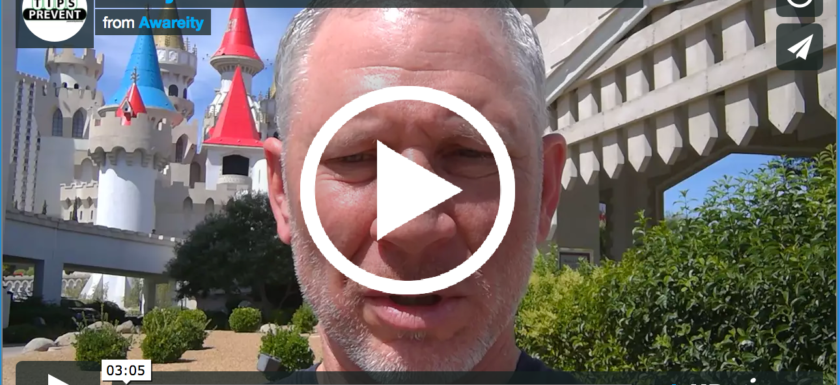
I am not a fan of watching or listening to TV news, however, after the recent attacks in England, I was interested to see how TV news was covering the attacks. Buried in their biased views with the news, I was pleasantly surprised to hear a common thread emerge – TV anchors were asking their go to security experts the following question:
How do we start preventing and getting ahead of these attacks/attackers?
This is a great question, and a question everyone should be asking their organization and community leaders. Terrorism, community violence, campus violence, workplace violence, cyber-attacks, ransomware, acts of evil, and numerous other disruptive incidents are on the increase around the world, so how do we start preventing them?
Start paying attention to post-incident report findings and lessons learned which over and over find most incidents/attacks were preventable.
Hundreds and hundreds of post-incident reports are “connecting the dots” AFTER the incident/attack, so a simple and logical question must be asked:
If we can connect the dots AFTER an attack, why can’t we connect the dots BEFORE the attack?
The truth is, we CAN connect the dots BEFORE incidents/attacks occur!
I know we CAN because we have clients who are connecting the dots so they can intervene and prevent incidents/attacks BEFORE they occur.
If we CAN connect the dots, why are so many organizations, communities, law enforcement, and countries FAILING to intervene and prevent incidents/attacks BEFORE they occur?
- Their focus and budget is on Security, but not Safety. Security and Safety are very different and BOTH Security AND Safety are required.
- Their focus and budget is on First Responders, but not First Preventers. BOTH First Responders and First Preventers are required.
- They have conventional status quo incident reporting options, they do not have a central, secure collecting, assessing, and connecting the dots platform. BOTH incident reporting and a central, secure, community-wide, collecting, assessing, and connecting the dots platform are required.
What’s the difference between Security and Safety?
Security is some combination of gates, guards, guns, cameras, alarms, access control, locks, moats, and other security solutions designed to respond and react to a threat “at your front door” [alarms go off, cameras start recording, guards come running, etc.]. Safety is collecting, assessing, and connecting the dots and pre-incident indicators to intervene and prevent the threat “from arriving at your front door”.
What’s the difference between First Responders and First Preventers?
First Responders are primarily law enforcement, emergency management, and others who are prepared and equipped to RESPOND to incidents/attacks. First Preventers are threat assessment teams, behavior assessment teams, community threat assessment teams, and others who are prepared and equipped to assess, intervene, and prevent at-risk individuals from escalating towards incidents/attacks.
Fact: It is impossible to win with Defense only [First Responders]. Both Defense [First Responders] AND Offense [First Preventers] are required to win games and wars like we face today.
What is the difference between conventional incident reporting and an innovative collecting, assessing, and connecting the dots platforms?
Most conventional incident reporting systems managed By First Responders [Law Enforcement or Security] including See Something Say Something, Crime Stoppers, and numerous others. There are many “gaps and disconnects” with conventional incident reporting strategies/solutions including:
- Lack of Trust – a huge trust gap exists between Community Members and Law Enforcement which means many concerning behaviors and suspicious activities go unreported.
- Lack of Action – many concerning behaviors and suspicious activities are NOT crimes so Law Enforcement is unable to take any real action, so when Community Members see no action they become frustrated and decide they will no longer report since nothing happens.
- Lack of Anonymity – most conventional incident reporting options utilize phone number hotlines, text messages, e-mails, apps, telling a trusted adult in person, and/or web forms that require personal information so Community Members will not take the chance of being exposed, attacked, interrogated, etc.
- Lack of Connecting the Dots Tools – most conventional incident reporting options offer a dashboard and the ability to send the incident report to one or more people, but they lack critically needed tools for assessing, secure information sharing, connecting the dots, connecting resources, monitoring, intervening, and preventing on an ongoing basis.
How many times have we found out after an incident/attack that Law Enforcement had the attackers on their radar… but still failed to prevent the attack? WAY TOO MANY TIMES!
How and Why is this happening over and over?
Because organizations and communities have too many dangerous GAPS and disconnects between community members and social media community and Law Enforcement! For example, Community Members [family, friends, ex-significant others, students, employees, neighbors, etc..] observe “dots and pieces of the puzzle”, Law Enforcement have “their dots and pieces of the puzzle”, and the Social Media Community have their “dots and pieces of the puzzle”, BUT WITHOUT a central, secure, community-wide, collecting, assessing, and connecting the dots platform… organizations and communities can only “respond” to incidents/attacks and then say they failed to connect the dots.
Awareity offers the first proven community-wide connecting the dots solution to eliminate dangerous GAPS that evil doers take advantage of to execute attacks creating terror and chaos. No one else delivers a proven connecting the dots platform solution like Awareity’s research-based, a community-wide platform that is currently working in real life and saving lives, reputations, and bottom lines.
Acts of evil, violence, terrorism, and disruptive incidents are increasing all around you, are you going to wait and respond or are you going to start preventing?
To start preventing, contact Awareity immediately and see what is possible when you are prepared and equipped to collect, assess, and connect the dots in your organization and your community.